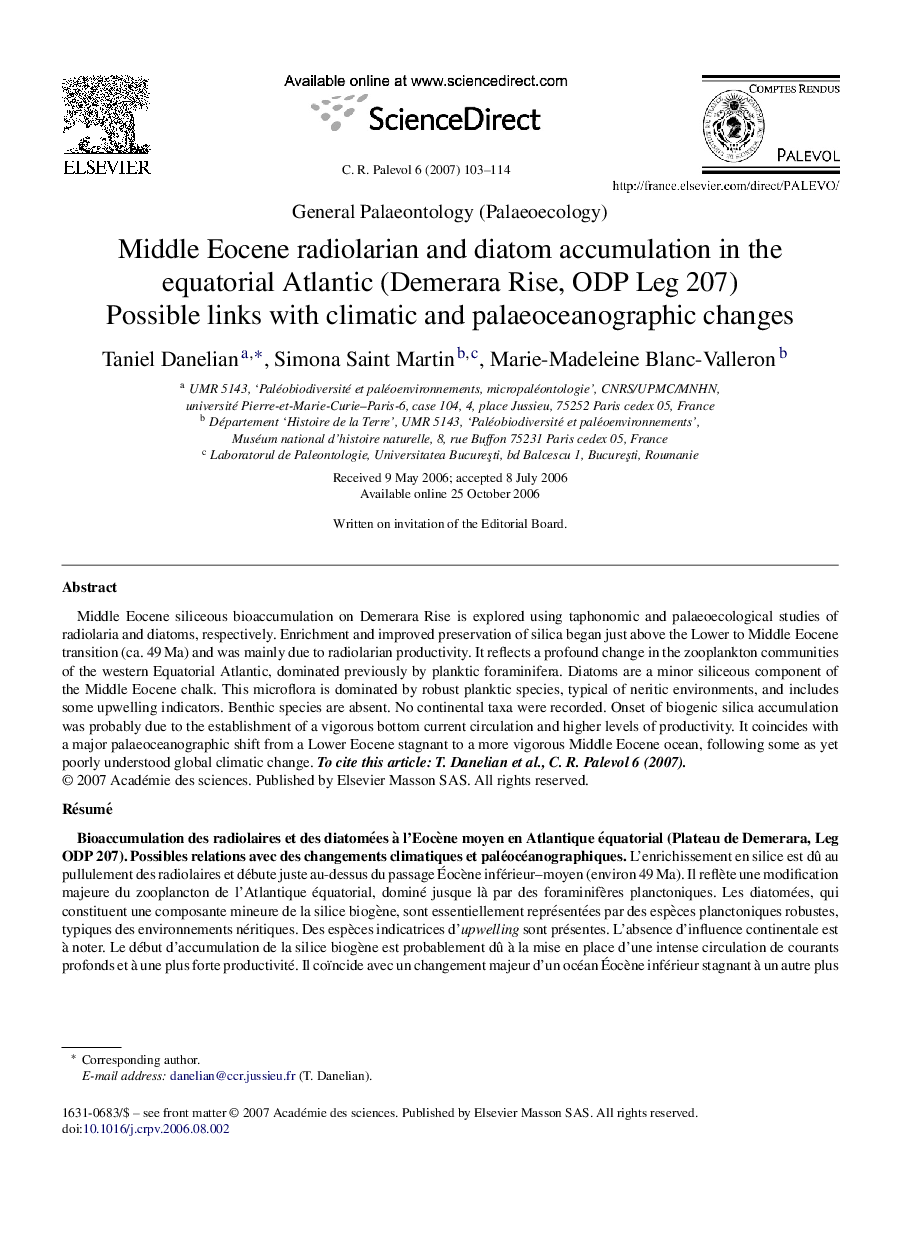| کد مقاله | کد نشریه | سال انتشار | مقاله انگلیسی | نسخه تمام متن |
|---|---|---|---|---|
| 4746348 | 1642016 | 2007 | 12 صفحه PDF | دانلود رایگان |

Middle Eocene siliceous bioaccumulation on Demerara Rise is explored using taphonomic and palaeoecological studies of radiolaria and diatoms, respectively. Enrichment and improved preservation of silica began just above the Lower to Middle Eocene transition (ca. 49 Ma) and was mainly due to radiolarian productivity. It reflects a profound change in the zooplankton communities of the western Equatorial Atlantic, dominated previously by planktic foraminifera. Diatoms are a minor siliceous component of the Middle Eocene chalk. This microflora is dominated by robust planktic species, typical of neritic environments, and includes some upwelling indicators. Benthic species are absent. No continental taxa were recorded. Onset of biogenic silica accumulation was probably due to the establishment of a vigorous bottom current circulation and higher levels of productivity. It coincides with a major palaeoceanographic shift from a Lower Eocene stagnant to a more vigorous Middle Eocene ocean, following some as yet poorly understood global climatic change.
RésuméL’enrichissement en silice est dû au pullulement des radiolaires et débute juste au-dessus du passage Éocène inférieur–moyen (environ 49 Ma). Il reflète une modification majeure du zooplancton de l’Atlantique équatorial, dominé jusque là par des foraminifères planctoniques. Les diatomées, qui constituent une composante mineure de la silice biogène, sont essentiellement représentées par des espèces planctoniques robustes, typiques des environnements néritiques. Des espèces indicatrices d’upwelling sont présentes. L’absence d’influence continentale est à noter. Le début d’accumulation de la silice biogène est probablement dû à la mise en place d’une intense circulation de courants profonds et à une plus forte productivité. Il coïncide avec un changement majeur d’un océan Éocène inférieur stagnant à un autre plus dynamique à l’Éocène moyen, à la suite d’un changement climatique global encore mal compris.
Journal: Comptes Rendus Palevol - Volume 6, Issues 1–2, January–February 2007, Pages 103–114